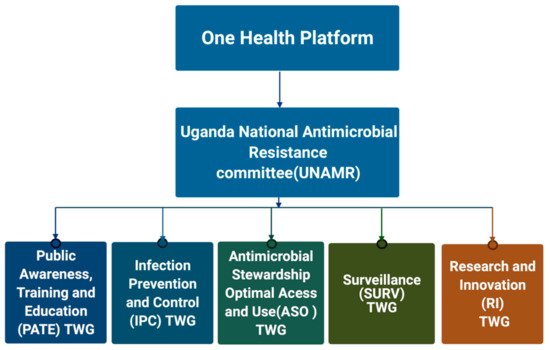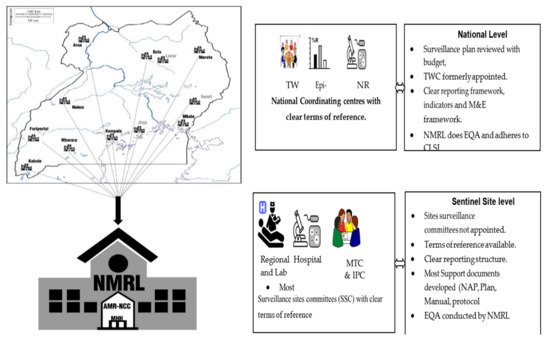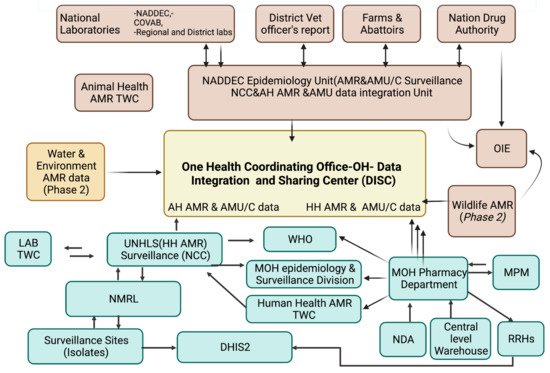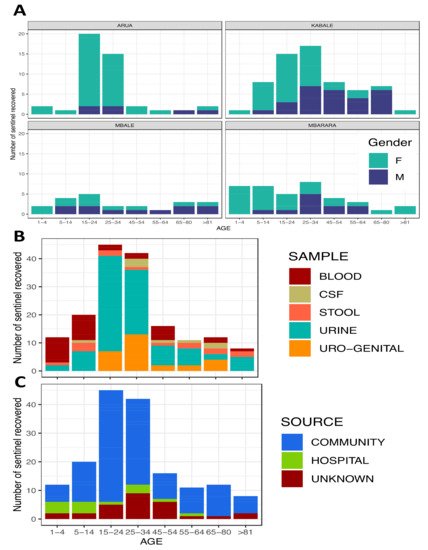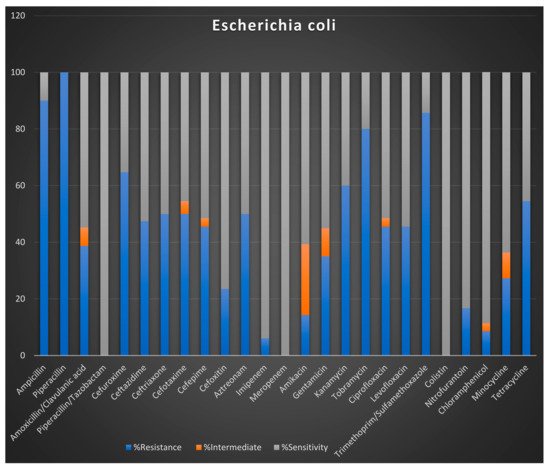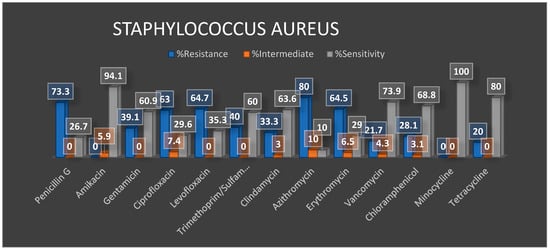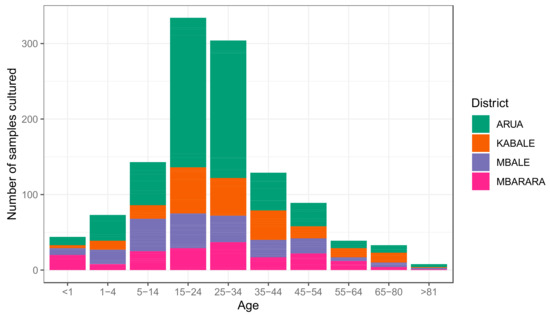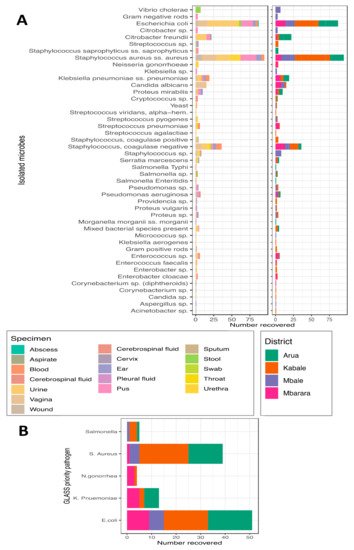Uganda is making strides and progress with regard to developing and implementing a functional AMR surveillance strategy for human health. Although numerous challenges still exist, following the laboratory health system strengthening approach, the readily addressable issues are with the health infrastructure, its integration, capacity building and operation. Antibiotic resistance and its mechanisms have now been in existance for over decades, and its drivers in both clinical, human, agriculture-veterinary go beyond the community and clinical aspects. Its noteworthy that the emergency of resistance is a natural phenomenon in the environment but kin to climate change.
If left unchecked, this has great potential of undoing all medical and agricultural advancements of the entire previous century. Implementation of country driven program based surveillance that embraces a One Health Approach is the ideal approach to understanding and solving this one health challenge that seems to be wicked in solve at the face mankind.
1. Introduction
Globally, bacterial infections cause acute and chronic life-threatening infections and are becoming difficult to treat due to the increasing emergence and spread of antimicrobial resistance. We have known about resistance and its underlying mechanism for close to seven decades, according to [1] but efforts to tackle resistance in routine practice are only starting to gain momentum. The drivers and determinants of antimicrobial resistance are complex and cut across strata of life and ecosystems, i.e., microbial, niche, food systems, human health and the environment in general [2].
Indeed, antimicrobial resistance is a natural phenomenon; however, its rapidly increasing prevalence is driven by misuse and overuse of antibiotics [3][4]. If not addressed, antimicrobial resistance will cost the global economy over 100 trillion USD by 2050 with a projection of over 10 million death annually [5]. To this end, AMR surveillance is considered a high-yield investment that countries must undertake to mitigate this global threat. Through surveillance, countries can monitor trends and detect the magnitude of the emerging resistance to priority antibiotics. This evidence can inform local policies both at the national and sub-national level in areas of treatment guidelines, as well as infection prevention and control strategies.
The World Health Organisation, through its global Antimicrobial Resistance Surveillance System (GLASS), provides baseline guidelines for surveillance, and most national action plans share the ambitions set out in this document. The guidelines serve as a framework to safeguard the integrity of antimicrobials whose utility is critical for infection management. For example, Uganda’s national action plan (NAP) aims to prevent, slow down and control the spread of resistant pathogens as indicated on http://www.cphl.go.ug/policy-documents (accessed on 18 August 2021). A robust surveillance system is integral to achieving these aims. Since its publication in 2018, various stakeholders along the AMR chain (human, animal health and environment) have been involved in developing and implementing components of the NAP.
2. Design of Sentinel Sites
2.1. Establishment of AMR Governance Structures at National and Sub-National Level
Governance structures are key and pertinent for pragmatic implementation of any strategy. Uganda’s AMR surveillance system has been rooted and structured in a governance structure that embraces One Health. This structure is composed of the One Health platform, the Uganda National AMR Committee and the different AMR Technical Working Groups as defined by the National AMR Action Plan (Figure 1). These as well address the implementation component for the key strategic objectives of the AMR-NAP-2018.
Figure 1. The design of Uganda’s AMR governance structure at national level. On top is the One health platform, under which is the committee that oversees activities on AMR in Uganda. The oversee the pillars on which the National action plan is implemented todate.
This situational analysis was guided by the following central documents on AMR at the global and local levels; (a) WHO guideline on AMR published in
[6], particularly the recommendations to establish national coordination centres for in-country AMR activities. The centres then become the regional or indeed sub-regional anchors of surveillance systems. In Uganda, these sites are distributed across the country and its regions and serve as sentinel sites for surveillance (
Figure 2). Uganda’s AMR-NAP is a blueprint for the strategic plan on how AMR will be tackled, and it recommends the development of key documents to implementation surveillance. The following documents were developed in the first year of the AMR-NAP. These include (a) Human Health AMR Surveillance Plan, (b) Human Health Antimicrobial Use and Consumption Surveillance Plan, (c) Diagnostic Stewardship Manual for AMR Site Surveillance and Clinical Protocols, (d) In-service Microbiology Training Curriculum, the Uganda National Policy for Bio-banking and Achieving Microbiology Isolates, and twelve sets of standard operating procedures (SOPs), which can be harmonized and adopted by all microbiology laboratories in the network with the inclusion of animal health, environment, and food and beverage laboratories. Taken together, these documents define the standard operating procedures for the delivery of the various components of the surveillance plans under the following key pillars.
Figure 2. Uganda’s design of AMR Sentinel Surveillance system based on the already-existing Ministry of Health structure of regional referral hospitals and how functional linkages for conducting AMR surveillance from the facility level are extended to the national level.
The design is based on a number of regional referral hospitals and some high-volume private facilities. These share antimicrobial susceptibility data and isolates with the National Microbiology Reference Laboratory (NMRL). All of this surveillance and system design work is coordinated by the National AMR Coordination Centre, which is housed within the Ministry of Health Department of Laboratory (NHLDS).
2.2. Human Health AMR Laboratory Diagnostics
Sample collection is designed to reflect the referral system of the healthcare system in Uganda, which in itself allows for examining the changes in AMR profiles as patients are escalated through the referral system. Since patients spend longer periods in hospital at higher strata of the referral system, we expect that the odds of exposure to hospital-generated AMR increase and so will the detectable resistance [7]. The location of sentinel sites is critical as it has a direct impact on the time of sample collection to processing. This in turn has an effect on the recovery of microbes for AMR susceptibility profiling in this analysis.
2.3. Integration and Development of Linkages for Electronic Data Interoperability and Sharing
Uganda has leveraged existing Ministry of Health laboratory information platforms built on the health laboratory infrastructure to form a laboratory information system known as the African Laboratory Information System (ALIS). This information system has been developed as a generic tool for the country’s laboratory system and programmed to integrate with other systems and tools such as WHO-NET. The system takes all the key variables on the patient laboratory request form so that patient-level data can be analysed to generate epidemiological reports automatically.
2.4. AMR Data Management at Facility and Reference Laboratory Level{ TC “AMR Data Management at Facility and Reference Laboratory Level” \f C \l “1” }
At the sub-national facility level, in the microbiology laboratory request forms and the daily activity registers, patient level data is entered into WHONET, a software application that analyses these data. Working with the facility implementing partner, data entry is validated at the facility level prior to being shared with the National Coordination Centre. Data validation at the national level is performed by the Technical Working Committee on surveillance that scrutinizes the data prior to external uploading onto the WHO-GLASS. SOPs and developed guidelines for data collection, sampling and reporting in surveillance sites are standardized: strengthen data management at AMR secretariat, NCC and sentinel sites by delivering IT infrastructure, paper-based forms and registers to sites, e.g., microbiology referral forms and registers; and train laboratorians to analyse microbiology lab AST data. Anonymized isolate level data are submitted to the AMR-NCC through an electronic system at the national level, and this will eventually be linked to the national database (DISC) for evaluation of quality. Monthly AMR and microbiology data are reported to DHIS2.
At the national level, patient level data are received with their parent isolates from their respective facilities. They are then anonymized for analysis using WHONET software that is integrated with the in-house laboratory information system called the African Laboratory Information System (ALIS). Drug bug data sheets are generated from the national microbiology reference laboratory and are then shared with the AMR-NCC.
The National AMR Coordination Centre hosts the database, and according to the established data sharing guidelines, the sharing of these data will follow the Data Sharing and Information Centre (DISC) yet to be established under the One Health for AMR. Currently, the architectural design of the data sharing centre exists. { TC “Figure 3: Components of the AMR surveillance system” \f C \l “1” }
Figure 3. Illustration of the data sharing architecture with Human Health data linkages to One Health. This is colour coded according to the human health (green), animal health (brown), water and environment as a light brown shade
2.5. Surveillance for AMR Stewardship Optimal Use, Access and Consumption { TC “Surveillance for AMR Stewardship Optimal Use, Access and Consumption” \f C \l “1” }
As guided by the AMR-NAP, the development of a successful national AMU/C surveillance program is on-going currently with the process of policy and guideline development, and reviews as pre-requisite to ministry approval for operationalization. The protocols and guidelines are currently being drafted and presented to the ministries as well as the One Health technical working committees to guide and update the surveillance plans.
2.6. Approaches for AMR Data Management in Human Health{ TC “10.0 METHODS AND APPROACHES FOR AMR DATA MANAGEMENT IN HUMAN HEALTH” \f C \l “1” }
AMR surveillance in low- and middle-income settings [8] reflects Uganda’s perspective. Raw data on 10 national priority pathogens classified for country surveillance were collected following a recent study of acute febrile illness (AFI) alongside the clinical samples received by these laboratories for routine patient care, [9]. As an initial step, Uganda designated sentinel sites to perform AFI surveillance studies with the support of the CDC and the Global Health Security Agenda. The project and its data helped to inform the initiation of the national surveillance program as a basis to select sites with minimal capacity. It was this first set of data that was used in the first country AMR WHO-GLASS report.
Following a routine case-based surveillance approach towards priority specimens (blood, urine, stool, genital swabs and CSF), these samples are sent to microbiology laboratories for the purposes of clinical testing at the four sentinel sites. Here, using patient level data tools, epidemiological, clinical and demographic data were also collected alongside the microbiology data. After basic microbiology cultures and sensitivity testing, isolates are sent to the National Microbiology Reference Laboratory (NMRL) for validation and archiving. At the end of every quarter of a year, the NMRL must conduct site visits for retrospective on-site data cleaning and support supervision for improved microbiology culture and sensitivity laboratory procedures.
2.7. Processing and Quality Control for AMR Data{ TC “Process Quality Control for AMR Data” \f C \l “1” }
All sentinel sites are linked to a national microbiology network that involves the National Microbiology Reference laboratory, laboratories in the academia, private sector and other research laboratories performing microbiology culture and sensitivity testing. All laboratories in the network are required to refer isolates to the National Microbiology Reference Laboratory for validation and archival in the biorepository. In addition, all regional reference laboratories participate in the Laboratory Quality Management Systems for internal quality control, and recently a new scheme for microbiology in country EQA was rolled out by the National Microbiology Reference Laboratory, beginning with Gram’s reaction and panel test to 16 laboratories in the network. Antimicrobial susceptibility testing is currently performed following the CLSI guidelines.
The WHONET is integrates with the existing laboratory information systems as customised by the AMR surveillance in Uganda; these include the African Laboratory Information System (ALIS). According to Figure 4A–C clearly displays the functioning units of the AMR surveillance system and how the data generated displays the WHO-GLASS priority pathogens and specimens. This is ideal for any AMR surveillance system that focusing on AMR priority pathogens and specimens. When integrated, these two software platforms will provide the basic digital infrastructure for local surveillance and reporting to WHO-GLASS as well as the AMR- National Coordination Centre of the Ministry of Health.
Figure 4. Preliminary analysis of microbes recovered from specific samples. (A) shows the distribution of these organisms by district, age group and gender. (B,C) show the same distribution by specimen collected and source, i.e., community or hospital.
3. Preliminary Results and Outputs
Preliminary Antibiotic Resistance Profiles
This analysis focused on two of the susceptible GLASS priority organisms, i.e., E. coli and S. aureus. These were tested on 25 commonly used antibiotics as shown in the stacked Bar graph in Figure 5. Figure 6 further details the antimicrobial susceptibility profiles of S. aureus given the listed antibiotic discs used in the laboratory.
Figure 5. Stacked column graph for E. coli is for Arua Health Region isolates for AST patterns validated by the National Microbiology Ref. Lab for 2019. Data source and analysis by NMRL-AMR NCC-Biostatician.
Figure 6. Distribution of antimicrobial susceptibility profiles of S. aureus across different available antibiotics.
Due to their use for prophylaxis against other infectious diseases in immunocompromised patients
[10], trimethoprim/sulfamethoxazole are examples of antibiotics that have been overused, here we relatively draw our assumptions and infer that the over use in prophylactic preventions exposes the bacteria to high microbial resistance as well as mounting endemic resistance to the cephalosporins class, leading to further overuse by clinicians hence a broad resistance.
The antibiotics with the least resistance include piperaciline-tazobactam, meropemem, imipenem and colistin; indeed, the data on usage and consumption below shows direct relationships with these patterns. On the other hand, 80% of
S. aureus isolates were resistant to azithromycin. Many of the colistins and meropemem are antimicrobials used in single and combination therapy for colistin-resistant bugs
[11]. However, in Ugandan public hospital settings, they are indicated as reserve drugs in the public sector and can only be dispensed with a physician’s approval. Therefore, the limited resistance observed could be linked to the limited use component because their availability for consumption is limited due to high cost and reserve use in hospital settings
[12]. Other antibiotics to which
S. aureus showed higher levels of resistance included penicillin, ciprofloxacin and levofloxacin. The least resistant were amikacin and minocycline.
4. Summary
Most This situation analysis report focuses on the design of the human health surveillance framework for AMR as presented in the figures and preliminary data analysis above. In so doing, it provided preliminary outputs from this system that can then be used to examine the performance in the context of implementing the Uganda’s AMR-NAP and inform future plans of scaling up the AMR surveillance network from four sentinel sites to cover all the referral hospitals. It further demonstrated with evidence the practical integration and communication between components of the surveillance system as it was mapped for data collection, quality and quantity, and microbiological recovery in laboratories as well as the diversity of pathogens detected to examine the performance and utility of this sentinel surveillance system.
The evidence illustrates that structural designs for data collection, processing, quality assurance and sharing through digital surveillance infrastructure systems and linkages are ideal and worth benchmarking in low and limited settings as approaches to AMR surveillance using existing systems versus investments in operations and the implementation of scientific research.
It is noteworthy that most of the microbes recovered here originated from clinical samples with no clear cut-off point to determine community- and hospital-associated infections. This is still a challenge in the clinical management of infectious diseases, as most clinical settings have not clearly defined the criteria for classification of these infections. Similarly, there was a significant increase in the prevalence of
E. coli and
K. pneumoniae, producing CTX-M-type extended-spectrum beta-lactamase and carbapenemase in patients from a rural community with community-acquired infections; these infections were then transmitted to hospital communities, significantly contributing to hospital-associated infections
[13]. This makes infection prevention and control strategies in each of these sentinel sites ideal to address the transmission of resistant bugs. The data discussed included a small but significant number of samples whose origin was not captured, therefore some epidemiological utility was inherently lost.
The results show that between 2019 and 2020, 1209 samples were received from four of the 12 sentinel sites across the country for culture and identification of organisms, as shown in Figure 7, Figure 4, Figure 6 and Figure 8. The distribution of the cultured samples is presented in Figure 7; these show a normal distribution by age with modal age at 15–24, suggesting that the majority of samples were collected from patients within this age group. Most of these samples originated from the Arua district, whereas the Kabale district accounted for the smallest number. These preliminary outputs function as “low-hanging fruit”, confirming that if this surveillance system is utilised well and enhanced, and indeed if the differences in samples include data for culture and sensitivity, this system can be the basis of monitoring to establish the reasons why the Kabale district and other poorly performing sites report fewer samples.
Figure 7. Distribution of the 1209 samples cultured from the four sentinel sites whose results are presented in this report. The X-axis represents the age brackets of the patients from whom samples were collected. The Y-axis shows the number of samples.
Figure 8. Microbes recovered from the cultured samples in Figure 7. Here, (A) has two panels, the first showing distribution by specimen and the second by district of origin. (B) shows the GLASS priority pathogens recovered from each of the district sentinel sites.

